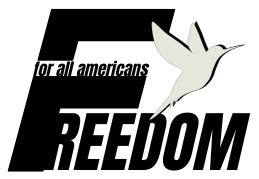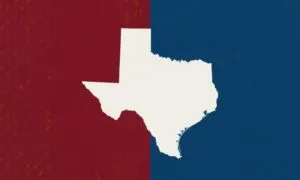Let’s face it—figuring out who you are can be confusing. Especially when it comes to questions about your sexuality, the uncertainty can feel overwhelming. That’s why tools like this quiz can be helpful. They offer a low-pressure way to explore your feelings and help spark some self-reflection.
- Take it in a calm moment.
- Answer based on what you feel most of the time.
- Results are a starting point you can revisit as feelings evolve.

Important Note: If thinking about your identity brings up anxiety or distress, it can help to talk to someone trained to listen. The Trevor Project offers 24/7 support for LGBTQ+ young people, and while the U.S. 988 hotline no longer has a dedicated LGBTQ+ option as of July 2025, you can still reach compassionate counselors through 988, or contact LGBTQ-specific services directly.
The “Am I Gay” quiz offers a set of questions aimed at helping you reflect on your sexual orientation. It’s not a magical crystal ball that will label you for life, but it’s a tool designed to help you consider thoughts and feelings you might not have fully acknowledged.
Table of Contents
Toggle7 Signs That You Might Be Gay
While “How gay am I quiz” or anything similar can’t and will not define you, there are some signs that might suggest you’re gay. Here are a few to consider:
1. Attraction to the Same Sex
A clear sign is feeling romantically or physically attracted to people of the same sex. This could manifest as a crush, infatuation, or desire for a deeper connection.
2. Fantasies and Daydreams
If your daydreams or fantasies often involve people of the same sex, this might be a clue about your orientation.
3. Curiosity About LGBTQ+ Experiences
Feeling drawn to learn more about LGBTQ+ identities, communities, or stories can sometimes reflect a desire to understand your own feelings.
4. Disinterest in Opposite-Sex Relationships
If you find it hard to connect romantically or physically with people of the opposite sex, it may indicate your attractions lie elsewhere.
5. Feeling Different Growing Up
Many LGBTQ+ individuals report feeling “different” during childhood, even if they didn’t fully understand why at the time.
6. Emotional Resonance with LGBTQ+ Media
Feeling a strong connection to LGBTQ+ movies, books, or characters might point to deeper questions about your own identity.
7. Craving Same-Sex Affection
If the idea of being in a relationship with someone of the same sex feels exciting or comforting, it’s worth exploring these feelings further.
Demographics and Statistics of LGBT community
The demographics and statistics of the LGBTQ+ community vary across different countries and regions. Here are some notable findings:
Australia
- Population Estimates: A landmark report by the Australian Bureau of Statistics (ABS) estimated that approximately 920,000 Australians identify as gay, bisexual, sexually diverse, or gender diverse. This includes 3.6% (about 740,000 people) identifying as sexually diverse and nearly 1% (approximately 178,900 people) identifying as gender diverse.
- Age Distribution: Higher rates were observed among younger individuals, with 9.5% of those aged 16 to 24 identifying as LGBTI+ and 1.8% as gender diverse.
Figures come from the ABS’s first national LGBTI+ estimates, released December 2024.
United States
- LGBT Identification: A March 2024 Gallup poll reported that 9.3% of U.S. adults identify as LGBT. The distribution within this group is as follows: 57.3% identify as bisexual, 18.1% as gay, 15.1% as lesbian, 11.8% as transgender, and 4.2% as another LGBT identity (e.g., pansexual).
- Generational Differences: LGBT identification is more prevalent among younger generations, with 22.3% of Generation Z and 9.8% of Millennials identifying as such, compared to 4.5% of Generation X and 2.3% of Baby Boomers.
New Zealand
- Census Data: The 2023 New Zealand census reported that 4.5% of adults (172,383 people) identify as LGBTIQ. In terms of sexual identity, 54% identify as bisexual, 30% as gay or lesbian, and 13% as another sexual identity. Additionally, 0.7% of the adult population (about 23,000 people) identify as transgender.
- Regional Variations: Wellington has the highest proportion of individuals belonging to LGBTIQ communities at 11.3%, followed by Dunedin (7.3%) and Christchurch (6%).
Stats NZ released the first nationwide gender and sexual-identity data in 2023; Wellington has the highest share.
Global Perspective
- Sexual Orientation: A 2021 Ipsos survey across 27 countries found that, on average, about 80% of people identify as heterosexual, 3% as gay, lesbian, or homosexual, 4% as bisexual, 1% as pansexual or omnisexual, and 1% as asexual. Notably, younger generations, particularly Generation Z, are more likely to identify as bisexual (9%) compared to older generations.
It’s About Curiosity, Not Labels

People often feel pressure to find a definitive answer about their sexuality. But the beauty of tools like this is they don’t demand you to commit to a specific label. They’re more about curiosity than certainty. Sometimes, just naming a feeling or thought can help ease the anxiety of not knowing.
For example, if you’ve been wondering whether you’re attracted to people of the same gender, the questions might give you a moment to go, “Oh, maybe that’s why I feel the way I do.” Even if the quiz results don’t resonate, you might leave with more clarity about what questions to explore next.
Researchers have long described attraction as a spectrum rather than fixed boxes.
Tools like the Kinsey Scale and the Klein Sexual Orientation Grid were created to reflect that range, and newer work on sexual fluidity shows that some people notice shifts over time.
None of those tools “diagnose” you. They simply offer language for what you already feel.
Get to know the Terms – LGBT, LGBTQ+, LGBTQIA+, and LGBTTTQQIAA+

The acronyms LGBT, LGBTQ+, LGBTQIA+, and LGBTTTQQIAA+ represent the diverse spectrum of sexual orientations, gender identities, and expressions within the community.
Sexual orientation is about who you’re sexually attracted to. Romantic orientation is about who you’re romantically drawn to.
For some people those line up, and for others they don’t, which is normal.
Using separate terms for sexual and romantic attraction can help some people describe their experience more precisely.
Here’s a breakdown of the key terms and their meanings:
L – Lesbian
A lesbian is a woman who is romantically, emotionally, or sexually attracted to other women.
G – Gay
“Gay” typically refers to a person who is romantically, emotionally, or sexually attracted to individuals of the same gender. While often associated with men, the term can apply to people of all genders.
B – Bisexual (Bi)
Bisexual individuals experience romantic, emotional, or sexual attraction to more than one gender, often to both men and women.
T – Transgender
Transgender describes people whose gender identity or expression differs from the sex they were assigned at birth.
Q – Queer
Queer is an inclusive term that encompasses a range of sexual orientations and gender identities outside of cisgender and heterosexual norms. Historically used as a slur, it has been reclaimed by many in the LGBTQ+ community as a term of empowerment, though its use is still sensitive.
Q – Questioning
This term refers to individuals who are exploring or unsure about their sexual orientation or gender identity.
I – Intersex
Intersex refers to people born with physical or genetic traits that don’t fit typical definitions of male or female bodies. This might include variations in chromosomes, hormones, or reproductive anatomy.
A – Asexual
Asexuality describes individuals who experience little to no sexual attraction toward others. However, asexual people may still engage in romantic relationships, fantasies, or sexual activity. Asexuality exists on a spectrum and can vary from person to person.
A – Ally
Allies are individuals who support and advocate for the LGBTQ+ community, even if they do not identify as part of it.
P – Pansexual
Pansexual individuals are attracted to people regardless of their sex or gender identity, focusing instead on the person as a whole.
GQ – Gender Queer
Gender queer is a term for those whose gender identity does not align strictly with male or female categories, often existing outside the traditional gender binary.
GV – Gender Variant
Gender variance refers to behaviors or expressions that don’t conform to traditional gender norms. This may include individuals who reject conventional ideas of masculinity or femininity.
Aro – Aromantic
A person who experiences little to no romantic attraction. Some aro people still experience sexual attraction and may use another term alongside aromantic.
Demisexual
A person who experiences sexual attraction primarily after forming a close emotional bond. Demisexuality is on the asexual spectrum and does not specify which genders someone is attracted to.
How to Approach the “Am I Gay” Quiz

If you decide to take the quiz, there are a few things to keep in mind:
- Nobody else is watching, so answer truthfully. It’s for you, not anyone else.
- The results might not feel right immediately, and that’s okay. It’s just one tool, not the final word.
- This isn’t a graded test. It’s about reflection, not perfection.
Optional privacy tips
- Private browsing clears local history, but your activity can still be visible to sites, networks, or services.
- For stronger privacy, learn basic digital safety steps before researching sensitive topics.
Reliability of Online Quizzes
Sexuality is deeply personal and can be influenced by a variety of factors, including emotions, relationships, and experiences. Online quizzes are not tailored to an individual’s unique journey and can sometimes reinforce stereotypes or provide misleading results.
While they may spark curiosity or provide a starting point for introspection, it’s essential to approach these quizzes with a critical mind.
For a more comprehensive understanding of one’s identity, meaningful self-reflection or professional guidance from a counselor or therapist is far more reliable than any online quiz. However, we encourage you to try it out, if for nothing, at least for entertainment purposes.
Major psychology organizations caution against treating any one tool as definitive, and they strongly reject efforts to change a person’s orientation. If you want deeper clarity, look for an LGBTQ-affirming counselor who follows established practice guidelines.
Self-Acceptance
At its core, taking this quiz like this is less about figuring out a label and more about learning to accept yourself. Labels can be helpful, but they aren’t the goal. The goal is being at peace with who you are, wherever you fall on the spectrum of sexuality.
Self-discovery is rarely linear. One quiz isn’t going to answer every question, but it might nudge you toward more conversations—either with yourself or others.
Myths vs Facts
- Can a quiz tell me my exact label? No. It can only reflect patterns you report.
- Can orientation be changed through therapy or effort? No. Mainstream health bodies reject those practices as ineffective and potentially harmful.
- What if I have dated the opposite sex and now feel same-sex attraction? That is a common experience for many people.
- Do I have to choose a label now? You never have to rush. Curiosity and honesty with yourself matter more than picking a word today.
Curiosity Can Be Very Empowering
If you’re questioning your sexuality, that’s actually a sign of growth. You’re thinking about your identity and giving yourself permission to ask big questions. That’s brave. The Am I Gay quiz might seem like a small step, but it’s often small steps that lead to the most profound discoveries. While here, you could also learn to use the right LGBT terminology.
Curiosity about who you are—whether it’s through quizzes, conversations, or simply sitting with your feelings—is a powerful thing. It’s how you grow into the person you’re meant to be.








